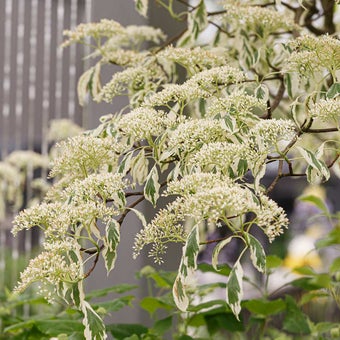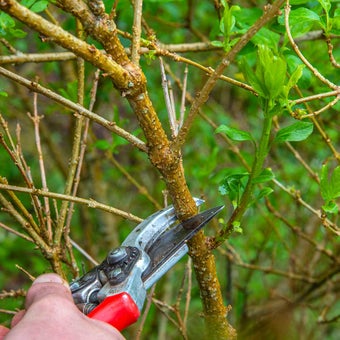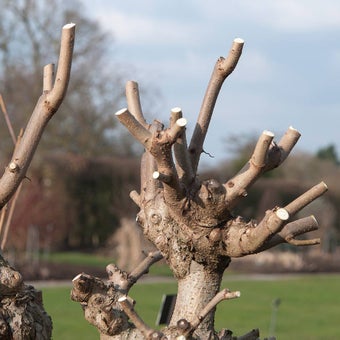
Quick facts
Suitable for - Coloured-stemmed shrubs such as dogwoods (Cornus) and some trees
Timing - Late winter (February) to mid-spring (April)
Difficulty - Easy
Suitable for...
These plants are hard pruned for the following effects;
- Coloured stems:dogwood (Cornus), willow (Salix), ornamental bramble (Rubus)
- Large leaves: Indian bean tree (Catalpa),Cercis, Cotinus,Eucalyptus, Paulownia, elder (Sambucus)
When to prune for stems
Late winter (February) or early spring (March), before the leaves begin to appear on the stems, is traditionally considered the best time to prune. However, to allow the maximum time to enjoy colourful stems, shrubby Cornus and willows are now typically pruned from late March to mid-April, just as the new growth is developing.
Plant roots and shoots are in balance and, after hard pruning, plants will regrow to re-establish this balance. It is important to prune in the season as the plant resources are largely in the roots and can be used for the required vigorous regrowth. If pruned in summer, plant resources - which, by this time, are predominantly found in the leaves - will be removed, and regrowth will be less strong.
How to prune for colourful stems or large foliage
Young plants need to establish for a year or two before you start hard-pruning. After that you can prune as follows:
- In the second or third spring, cut back to 60-90cm (2-3ft) from the ground for pollards or 5-7.5cm (2-3in) for coppiced (sometimes called stooled) specimens
- Pinch or thin out sideshoots to encourage further branching
- In subsequent years, cut back annually or every few years to the previous stubs
- Cut white-stemmed brambles such as Rubus cockburnianus, to ground level
- Some vigorous plants such as Salix require pruning annually, others, often less vigorous ones, such as Cornus sanguinea ‘Midwinter Fire’, can just be pruned every couple of years if you wish
- Apply a balanced general-purpose fertiliser at 70g per square metre (2 oz per square yard) each spring to support stem and flower growth
Problems
In dry summers, water the plants to ensure good growth, otherwise the display of stems will be affected in winter.













